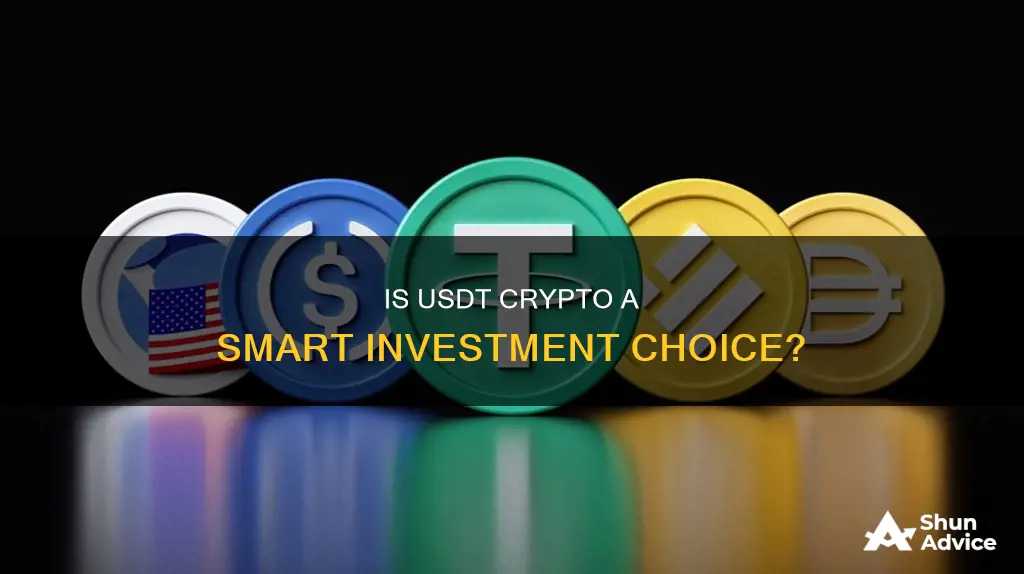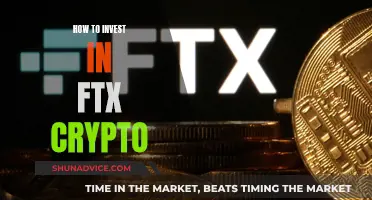
Tether (USDT) is a stablecoin, a type of cryptocurrency designed to maintain a stable price by being pegged to the value of a stable asset such as gold or the US dollar. Tether aims to maintain a 1:1 peg with the US dollar, meaning one Tether should always be equivalent to one US dollar. This stability is achieved through a robust system of reserves, with the company behind Tether, Tether Limited, asserting that every Tether USDT token in circulation holds an equivalent or greater value in its reserves.
Tether is the world's largest stablecoin by market capitalisation, with a market value of over $110 billion as of July 2024. It is also one of the first stablecoins to enter the market, offering a haven of stability in the volatile world of cryptocurrency.
However, Tether has faced controversies and scrutiny over the transparency and sufficiency of its reserves. In 2019, the New York Attorney General accused Tether's parent company of hiding an $850 million loss by dipping into Tether currency reserves. Despite these controversies, Tether continues to be widely used and has managed to maintain its position as a leading stablecoin.
So, is Tether a good investment? The answer depends on your investment goals. If you are looking for a stable cryptocurrency that can maintain its value and be efficiently traded for other blockchain-based assets, then Tether could be a suitable option. On the other hand, if your primary goal is profit generation, Tether might not align with your objectives, as it is designed to hold a consistent value around $1.
| Characteristics | Values |
|---|---|
| Purpose | Store of value, medium of exchange, safe haven for crypto traders |
| Value | 1 USDT = $1 |
| Volatility | Low |
| Liquidity | High |
| Trading fees | Low |
| Investment opportunities | High |
| Regulatory issues | Fined by the New York Attorney General |
| Market capitalisation | $110 billion |
What You'll Learn

USDT's stability and its pros and cons as a store of value
Tether (USDT) is a stablecoin, a type of cryptocurrency designed to maintain a steady valuation, shielding investors from the wild price swings common to cryptocurrencies like Bitcoin or Ethereum. Stablecoins are pegged to a stable asset, such as gold, the US dollar, or another fiat currency. USDT aims to be equivalent to one US dollar, offering a predictable and consistent value irrespective of market conditions.
USDT's stability is maintained through a reserve of assets held by Tether Limited, the company behind the stablecoin. Tether Limited claims that every USDT token in circulation holds an equivalent or greater value in its reserves, which include cash, short-term bonds, and term deposits. This mechanism ensures that each USDT can, in theory, be redeemed for one US dollar, thus maintaining price stability.
However, USDT's stability has been questioned and tested multiple times. In 2022, USDT briefly lost its $1 peg twice, dropping 2-3% below its backing each time. The first instance was due to the collapse of TerraUSD (UST), another stablecoin that relied on an algorithmic system. The second instance was due to the FTX exchange bankruptcy, which shocked the crypto industry. In both cases, USDT quickly regained its peg to $1.
The controversies and questions surrounding USDT's stability primarily centre on the liquidity and adequacy of its reserves. Tether Limited has faced scrutiny and legal challenges over the transparency and sufficiency of these reserves. In 2019, the New York State Attorney General investigated the tether token, alleging that its operators had engaged in a cover-up to hide the loss of $850 million in client and corporate funds. Tether and Bitfinex, its corporate sibling, agreed to pay an $18.5 million fine to settle the dispute.
In 2023, credit rating agency S&P Global ranked USDT's stability as "constrained", assigning it a score of 4 out of 5, with 5 being the weakest. S&P Global's ranking system evaluates a stablecoin's ability to maintain a stable value relative to a fiat currency. The low score given to USDT was due to concerns about the lack of regulation and supervision of Tether Limited, as well as the quality of the assets backing the stablecoin.
Despite these controversies and stability concerns, USDT remains widely used and is the third-largest cryptocurrency by market cap as of 2024. Its stability and liquidity make it a popular choice for crypto traders looking to mitigate risk.
Pros of USDT as a Store of Value:
- USDT offers a predictable and consistent value, shielding investors from the volatility of the cryptocurrency market.
- It provides a safe haven for crypto traders to park their funds temporarily during periods of high volatility without exiting the market entirely.
- USDT can be used for transferring money internationally with lower fees than traditional bank transfers.
- It serves as a stable medium of exchange for companies and individuals engaging in frequent transactions, as the price of more volatile cryptocurrencies can fluctuate wildly.
Cons of USDT as a Store of Value:
- USDT's stability depends on Tether Limited's ability to maintain its peg to the US dollar, which is reliant on the sufficiency and transparency of its reserves. Any doubts or issues regarding the backing of USDT could impact its value and stability.
- The regulatory landscape for stablecoins is evolving, and future regulations could affect USDT's operations and trustworthiness.
- There have been controversies and legal challenges regarding the transparency and sufficiency of Tether Limited's reserves, raising questions about the stability and reliability of USDT.
- The stability of USDT has been tested multiple times, and while it has always regained its peg, there is a risk of future de-pegging events that could impact its value.
Altcoin Investment: How Much is Sensible?
You may want to see also

Tether's history and controversies
Tether (USDT) was launched in November 2014 as a stablecoin, a type of cryptocurrency designed to maintain a 1:1 peg with the US dollar. It was originally named "Realcoin" and founded by Bitcoin Foundation director Brock Pierce, software engineer Craig Sellars, and entrepreneur Reeve Collins.
Tether is the world's largest stablecoin by market capitalisation and the third-largest cryptocurrency overall, with a market capitalisation of over $90 billion as of December 28, 2023. It is issued by Tether Limited, a company governed by the laws of the British Virgin Islands and incorporated in Hong Kong.
Tether has been mired in controversy since its inception. One of the main controversies surrounding Tether is the lack of transparency and verifiability of its claimed fiat reserves. There have been concerns that not all Tether tokens are fully backed by US dollar reserves, as the company has failed to produce a full, independent audit of its accounts. This issue has led to scrutiny from regulatory bodies like the Commodity Futures Trading Commission (CFTC) and the New York Attorney General.
In 2017, about $31 million worth of Tether was stolen in a hack, forcing the company to create a hard fork. The following year, in 2018, Tether and its sister company, the cryptocurrency exchange Bitfinex, received subpoenas from the CFTC. Tether has also been accused of manipulating the market by issuing USDT without dollar backing and then selling it to Bitfinex.
In 2019, the New York Attorney General accused Tether's parent company of hiding an $850 million loss by dipping into Tether currency reserves. Tether settled with the New York Attorney General in 2021, agreeing to pay $85 million and cease trading operations with New Yorkers, without admitting fault.
In 2022, Tether briefly lost its $1 peg twice, firstly due to the collapse of another stablecoin, TerraUSD (UST), and secondly due to the FTX exchange bankruptcy. Despite these controversies, Tether has maintained its position as a leading stablecoin and continues to be widely used in the cryptocurrency market.
Crypto: A Risky Bet I Won't Take
You may want to see also

How Tether works
Tether (USDT) is a stablecoin, a type of cryptocurrency that aims to provide a less volatile digital currency. Stablecoins are pegged to a stable asset, such as gold or fiat currencies like the US dollar, to maintain a steady valuation. Tether is pegged to the US dollar at a 1:1 ratio, meaning that, in theory, 1 USDT can always be traded for $1.
Tether is issued by Tether Limited, which claims that every USDT token in circulation is backed by an equivalent or greater value in its reserves. These reserves are a blend of liquid assets, including cash, short-term bonds, and term deposits. Tether publishes daily reports on the total number of USDT tokens in circulation and the amount of reserves it holds to ensure transparency and build trust.
Tether does not have its own blockchain. Instead, it leverages the infrastructure of other established blockchains, such as Ethereum, Solana, and Polygon, to host its tokens. This allows Tether to benefit from the security, speed, and features of these third-party platforms.
Here's a step-by-step look at how Tether works:
- Tether issues new tokens when they are requested and purchased by customers who have followed their strict Know-Your-Customer (KYC) procedure.
- When an everyday investor buys Tether from an exchange, the amount of USDT does not change.
- However, if a large institution wants to convert a large amount of money directly into Tether, they provide the funds directly to Tether Limited and receive an equivalent amount of USDT in return.
- The received funds are kept in Tether's reserves to provide backing for the newly issued USDT and maintain the stablecoin's peg.
- Conversely, when an institution decides to redeem USDT tokens for fiat currency, the tokens are "burned" or destroyed, effectively removing them from circulation.
- This mechanism ensures that the supply of Tether directly reflects the amount of reserve assets, thus maintaining the peg and the stability of the token.
Tether's stability has been tested several times throughout its history. In 2022, USDT briefly lost its $1 peg due to the collapse of another stablecoin, TerraUSD (UST). Despite these challenges, Tether has managed to regain its peg to the US dollar and remains a widely used stablecoin in the cryptocurrency market.
Coinbase Investment: How Much Money Should You Invest?
You may want to see also

Tether's price history and future predictions
Tether (USDT) is a stablecoin, a type of cryptocurrency designed to maintain a stable price, in this case, a 1:1 peg to the US dollar. Tether was launched in 2014 as Realcoin, co-founded by Brock Pierce, Reeve Collins, and Craig Sellars. It was one of the earliest and first successful stablecoins.
Tether's price history has been relatively stable, with the cryptocurrency managing to stay quite close to the dollar over its extended history. There have been a few notable exceptions, however. In 2017, for example, its price dropped to around $0.91, and in December of the following year, it rose to $1.02.
The most significant deviation occurred in May 2022 when the collapse of the Terra blockchain and the de-pegging of the UST stablecoin caused Tether's value to drop to $0.95 before returning to its pegged value. In 2023, Tether also experienced instability, moving away from its $1 value due to significant selling pressure.
Despite these fluctuations, Tether has maintained its position as the largest stablecoin by market capitalisation, currently valued at over $110 billion as of July 2024.
Future Predictions
Tether is expected to uphold its value at $1.00 in 2024, driven by its role as a stablecoin. However, there are differing opinions on its future price movements.
- CryptoPredictions.com forecasts Tether to reach $1.006 by the end of 2024, with a maximum predicted price of $1.260 by December 2024.
- BitScreener maintains a bullish sentiment, anticipating Tether's trading range to be between $0.9978 and $1.01 throughout 2024.
- WalletInvestor predicts a slight increase to around $1.001 by the end of 2024.
- CCN and other sources foresee a consistent value of $1 for 2025 and beyond.
- PricePrediction.net is more optimistic, forecasting Tether's price to grow gradually, reaching $1.340278 by 2030.
It is important to note that Tether is a stablecoin, and its price is designed to remain stable at around $1. Therefore, it is not expected to deviate significantly from this value in the long term.
Tether's price history has been relatively stable, with only minor deviations from its 1:1 peg to the US dollar. Future predictions suggest that Tether will continue to uphold its value as a stablecoin, with potential for slight increases but no significant deviations from the $1 mark.
Islamic Coin: Halal Cryptocurrency Investment Opportunities for Muslims
You may want to see also

How to buy and where to buy USDT
Before deciding to invest in USDT, it is important to understand what it is and how it works. USDT, or Tether, is a type of cryptocurrency known as a "stablecoin." Unlike other cryptocurrencies like Bitcoin or Ethereum, which are known for their volatility, stablecoins are designed to maintain a stable value relative to a specific asset, often a national currency such as the US dollar. Each USDT token is backed by a corresponding US dollar held in reserve by Tether Limited, the company that issues USDT. This 1:1 backing is meant to provide price stability, so in theory, one USDT should always be redeemable for one US dollar.
Now, here is a guide on how and where to buy USDT:
How to Buy USDT
There are a few different ways to purchase USDT, and the method you choose may depend on your preferences and the level of convenience you desire. Here are some common options:
- Cryptocurrency Exchanges: You can buy USDT on many major cryptocurrency exchanges, such as Binance, Coinbase, or Kraken. These exchanges provide a platform for you to buy, sell, and trade cryptocurrencies, including USDT. You will typically need to create an account, verify your identity, and fund your account with a bank transfer, credit/debit card, or another cryptocurrency.
- Peer-to-Peer (P2P) Marketplaces: P2P marketplaces, such as LocalBitcoins or Paxful, allow you to buy USDT directly from other individuals. These platforms often offer a wide range of payment methods, including bank transfers, cash deposits, or even gift cards. The process usually involves browsing seller listings, choosing a seller, and following the instructions to complete the transaction.
- Brokerage Platforms: Some online brokerage platforms, similar to those used for stock trading, now offer cryptocurrency trading, including USDT. Examples include eToro or Robinhood Crypto. These platforms often provide an intuitive and user-friendly interface, and you can typically fund your account using traditional payment methods like bank transfers or credit/debit cards.
Where to Buy USDT
When it comes to deciding where to buy USDT, you have a variety of options, each with its own advantages and features:
- Binance: One of the largest cryptocurrency exchanges in terms of trading volume, Binance offers a wide range of trading pairs, including USDT pairs. It provides a comprehensive trading platform with various features, such as spot trading, margin trading, and a P2P marketplace. Binance also supports a large number of cryptocurrencies, giving you more options for trading and investing.
- Coinbase: Coinbase is a popular choice, especially for beginners, due to its user-friendly interface and strong security measures. It offers an easy way to buy USDT with a linked bank account or credit/debit card. Coinbase also provides Coinbase Pro, a more advanced trading platform with lower fees for those looking for additional features.
- Kraken: Another well-known and respected exchange, Kraken, offers USDT trading pairs with multiple fiat currencies, including USD, EUR, and JPY. It provides advanced trading features, such as margin trading and futures, as well as a dark pool for large-volume traders. Kraken is known for its strong security measures and has never been hacked, giving users peace of mind.
It is important to note that the availability of each platform may vary depending on your location, as some exchanges may not be available in certain countries or regions due to regulatory reasons. It is always a good idea to check the specific platform's website to ensure it supports your region and payment methods before signing up.
Remember to do your own research, understand the risks involved, and consider diversifying your investments to manage risk effectively.
Gyen Coin: A Smart Investment Decision?
You may want to see also
Frequently asked questions
USDT, also known as Tether, is a cryptocurrency tied to the US dollar's value, offering stability in the volatile cryptocurrency world.
Tether offers more liquidity than any other digital asset. Being pegged to the US dollar means it is quite stable in value, which is why it is so commonly used for trading. Almost every other cryptocurrency experiences great price fluctuations, whereas Tether shows low volatility, making it ideal for investors seeking a stable and secure portfolio.
Tether has been embroiled in controversy over its false claims and lack of full backing. In 2019, the Attorney General of New York accused the parent company of Tether of hiding an $850 million loss by dipping into the Tether currency reserves. Tether settled with the Attorney General, agreeing to pay $85 million and cease trading operations with New Yorkers, but did not admit fault.
The answer depends on your investment goals. If you are looking for a cryptocurrency that maintains its value and can be efficiently traded for other blockchain-based assets, then it might be right for you. However, if your goal is profit generation, USDT might not align with your objectives.







